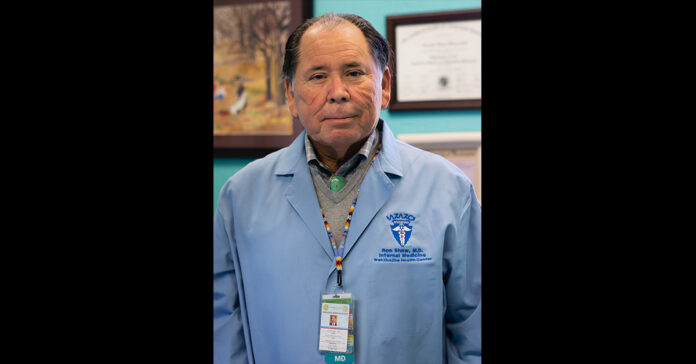By
Benny Polacca
As efforts continue to distribute the COVID-19 vaccinations nationwide, the Wah-Zha-Zhe Health Center is asking Osages and Native Americans to consider receiving the vaccine due to their higher risk of contracting the virus.
Dr. Ron Shaw, CEO and Chief Medical Officer at the WZZHC, is featured in a Jan. 5 social media video discussing the higher risks as he asks fellow Osages and Native people to make informed decisions on whether to receive the COVID-19 vaccine.
The WZZHC has a three-phase vaccine distribution plan in place and is in Phase 1 with the WZZHC patient target groups including adults age 55 and older, ON Health Services and WZZHC employees, long-term care patients and essential government employees including elected officials as of late January.
Both COVID-19 vaccines which received FDA emergency use authorizations in December – Pfizer-BioNTech and Moderna – are offered at the WZZHC.
According to the CDC, both COVID-19 vaccines will need two shots to get the most protection. The timing between the first and second shot depends on which vaccine the patient received. The second shot should be received:
- For the Pfizer-BioNTech, three weeks (21 days) after the first shot,
- For the Moderna, one month (28 days) after the first shot.
The CDC recommends patients should get their second shot as close to the recommended three-week or one-month interval as possible. However, there is no maximum interval between the first and second doses for either vaccine. Patients should not get the second dose earlier than the recommended interval.
“One of the most important considerations I think one needs to take in deciding whether to take the risk of the vaccine or the risk of acquiring COVID-19 and its possible lethal complications is this: We believe, and data is supported by the Centers for Disease Control and Prevention, that the incidents of COVID-19 is 3.5 or four times higher in American Indian people than it is in non-Indians,” Shaw said. “It’s important to consider that your risk as an Indian person is higher – not just the same as the non-Indian people who may live in your area. We’re not sure why that is, we’re not sure what genetic or racial or other backgrounds may help increase that risk, but that’s an observed fact.”
Shaw’s comments come weeks after the CDC released a December 2020 report noting: “Based on data from 14 participating states, age-adjusted COVID-19–associated mortality among American Indians/ Alaska Natives was 1.8 times that among non-Hispanic Whites. Among AI/ANs, mortality was higher among men than among women, and the disparity in mortality compared with non-Hispanic Whites was highest among persons aged 20–49 years.”
Shaw adds: “Also hospitalizations and mortalities are higher among American Indians, so as you make your decision about deciding to subject yourself to the risk of a completely proven vaccine versus the risk of acquiring COVID-19 and possibly hospitalized and dying, you need to realize that there are risks of not taking the vaccine like dying from COVID-19, being put in the hospital or perhaps acquiring it and giving it to members of your family or elders. So please keep that risk in mind that it’s not just the risk of the vaccine, but what are the risks of not taking the vaccine and getting COVID-19 and becoming a source of contagion? … You are not at standard risk of COVID-19 and its complications of acquiring it because as an American Indian you are at a much higher risk.”
Follow the “Wah-Zha-Zhe Health Center” on Facebook for updates on the COVID-19 vaccinations and other clinic services and information for patients.
Also, the WZZHC COVID-19 vaccination hotline can be reached at (918) 287-0076.
Original Publish Date: 2021-02-18 00:00:00



